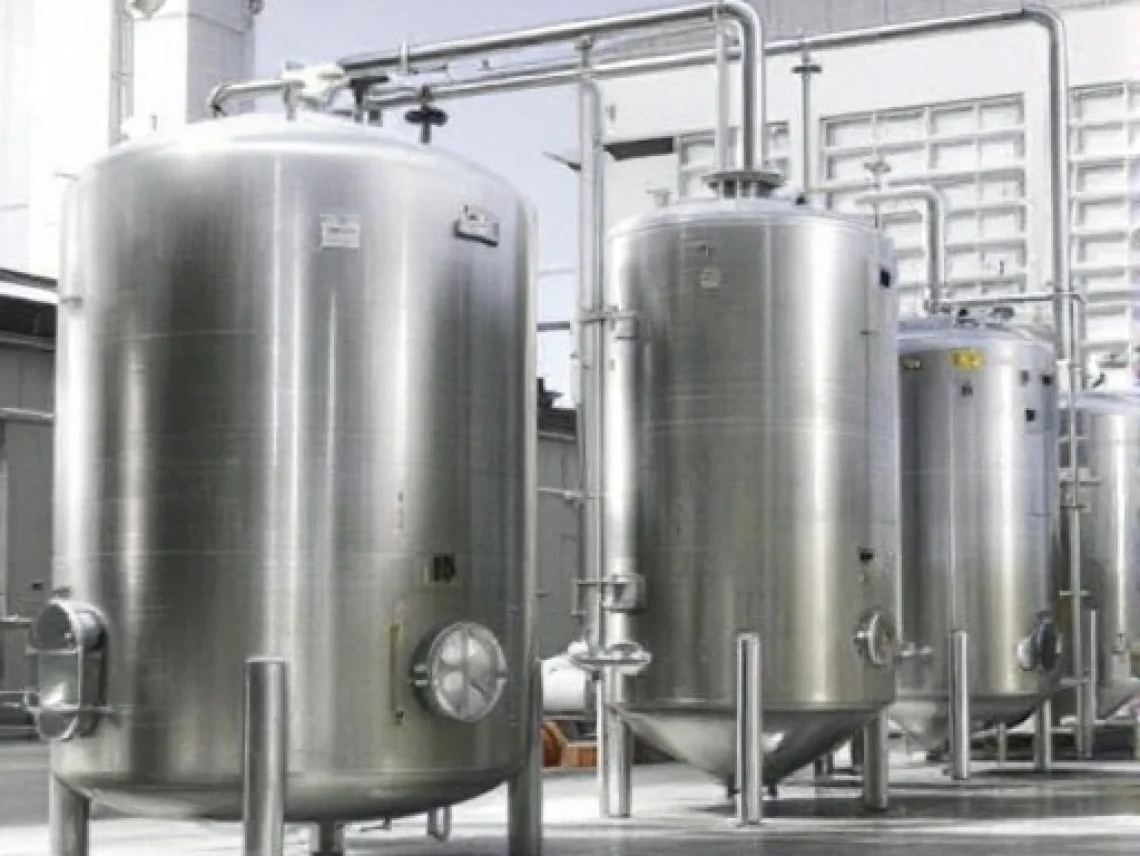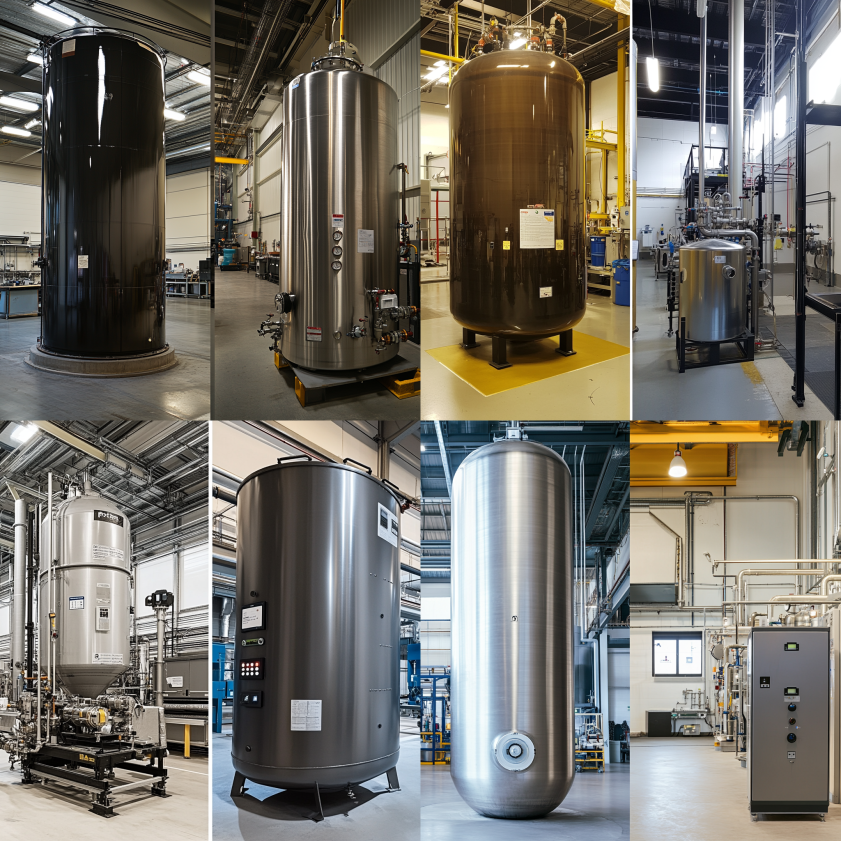Pressure Tank vs Vessel: Understanding the Key Differences

Table of Contents
ToggleWhy Pressure Tank vs Vessel Matters in Industrial Applications
When comparing pressure tank vs vessel components in industrial and mechanical systems, it’s important to understand their distinct roles. While the terms are sometimes used interchangeably, a clear look at pressure tank vs vessel differences reveals unique functions, engineering standards, and applications in both residential and industrial settings.
Understanding the Basics of Pressure Tank vs Vessel
Both pressure tanks and pressure vessels are designed to handle substances under pressure, but they serve different operational goals. A pressure tank is typically used in systems to manage fluctuations and maintain consistent output, such as in water supply systems.
A pressure vessel, by contrast, is a more general term used for containers that hold gases or liquids under pressure—often in high-stakes environments like chemical plants, oil refineries, or power generation facilities.
When evaluating pressure tank vs vessel, the difference becomes clearer in terms of design complexity, safety requirements, and how they’re integrated into broader systems.
Functional Differences Between Pressure Tank vs Vessel
Pressure Tanks: System Stability and Efficiency
A pressure tank is commonly found in applications where maintaining stable pressure is critical, such as:
- Residential well systems
- HVAC systems
- Irrigation setups
Its main role is to reduce the cycling of pumps by storing pressurized fluid and delivering it steadily.
Pressure Vessels: High-Pressure Containment and Processing
A pressure vessel is used to:
- Contain gases or liquids under pressure
- Withstand internal reactions and temperature changes
- Enable chemical processes in a sealed environment
These vessels are critical in:
- Oil and gas processing
- Power generation
- Chemical manufacturing
This is where the pressure tank vs vessel distinction becomes essential: one focuses on output stability, while the other is built for containment under demanding conditions.
Design and Safety Considerations in Pressure Tank vs Vessel
Both components require strong, durable materials—often carbon steel or stainless steel—but pressure vessels are subject to more rigorous engineering and inspection standards, such as ASME Boiler and Pressure Vessel Code requirements.
Pressure vessels typically include:
- Thicker walls
- Complex head designs (elliptical, hemispherical)
- Safety valves and pressure relief systems
Pressure tanks, on the other hand, may feature:
- A bladder or diaphragm to separate air and liquid
- Simpler construction
- Fewer regulatory burdens
Understanding these design differences is key when specifying equipment in the pressure tank vs vessel context.
Choosing Between Pressure Tank vs Vessel
When deciding between a pressure tank vs vessel, consider your system’s needs:
- Use a pressure tank for managing fluctuations and reducing pump cycles.
- Choose a pressure vessel when dealing with high-pressure containment or industrial processing.
Recognizing the pressure tank vs vessel distinction helps ensure safety, regulatory compliance, and operational efficiency in any application.
Design, Size, and Construction

Design considerations significantly differentiate pressure tanks from pressure vessels.
Construction and Standards
Pressure vessels are subject to rigorous engineering specifications, particularly under the American Society of Mechanical Engineers (ASME) Boiler and Pressure Vessel Code. This code governs the materials, design, manufacturing, inspection, and testing standards required to ensure safe operation. Pressure tanks used in lower-risk applications may not always require ASME certification, although compliance is recommended for added safety.
Size and Shape
Pressure vessels can be enormous and custom-built to suit complex operations in plants or manufacturing environments. They often come in cylindrical or spherical shapes, which helps distribute stress evenly and minimize weak points under pressure.
Pressure tanks are generally smaller and more standardized. A typical residential water tank might hold 20–80 gallons, while an industrial tank could be several times larger, but still dwarfed by most pressure vessels.
Material Differences
Pressure tanks are often made of steel or composite materials with a rubber bladder or diaphragm to separate the air and liquid compartments. In contrast, pressure vessels use thick steel alloys or other robust materials to withstand high internal pressures and extreme temperatures. Reinforcements, linings, and external supports are common features.
Application Areas
Residential Use
Pressure tanks are found in residential water systems, particularly those connected to wells. These tanks help maintain steady water pressure and protect the pump from overuse.
Commercial and Industrial Use
Pressure tanks may also appear in fire suppression systems, HVAC setups, or hydraulic accumulator systems. However, their pressure ratings and durability are limited compared to pressure vessels.
Pressure vessels, due to their strength and versatility, are used in:
- Petrochemical refineries for storing compressed gases
- Food processing plants to handle high-pressure sterilization
- Pharmaceutical industries where sterile and pressurized environments are necessary
- Power plants contain steam and heated fluids
Maintenance and Inspection
Pressure vessels demand regular inspection to ensure compliance with ASME and local safety standards. This includes non-destructive testing (NDT), pressure testing, and detailed record-keeping. Pressure tanks also require maintenance, but generally on a simpler scale, such as checking air charge and ensuring no leaks or corrosion.
Final Thoughts on Pressure Tanks vs Pressure Vessels
Understanding the difference between a pressure tank and a pressure vessel is essential for engineers, operators, and facility managers who work with pressurized systems. While the two components may share visual similarities and sometimes serve overlapping functions, their purpose, pressure ratings, construction standards, and safety considerations differ widely.
In short:
- Pressure tanks are designed for moderate pressures and system regulation.
- Pressure vessels are engineered for high-pressure containment, often within complex processing environments.
Selecting the right type not only improves system performance but ensures compliance with safety codes, protecting both personnel and infrastructure.
Need a reliable partner?
Frequently Asked Questions (FAQ)
1. Can a pressure tank be considered a pressure vessel?
Technically, yes. A pressure tank falls under the broad category of pressure vessels. However, it typically refers to lower-pressure and more narrowly purposed containers, such as those in water systems.
2. Which is better for residential water systems?
A pressure tank is the best choice for residential applications. It helps manage pump cycles and maintains steady water flow in homes, especially those on private wells.
3. Do pressure vessels always require ASME certification?
Most industrial pressure vessels require ASME certification, especially if operating under high pressure or containing hazardous materials. This ensures compliance with safety codes and reduces liability risks.
4. How long do pressure tanks and vessels typically last?
With proper maintenance:
- Pressure tanks can last 5–15 years, depending on quality and usage.
- Pressure vessels may last decades, but must undergo routine inspection and possible recertification.
5. Are pressure tanks suitable for chemical containment?
No. Pressure tanks are not designed to withstand the high pressures or corrosive substances often found in chemical processes. Pressure vessels, with reinforced materials and safety controls, are more suitable.
6. Can pressure tanks explode?
While rare, pressure tanks can rupture or fail if improperly maintained. Ensuring the correct pressure settings and checking for wear or corrosion reduces this risk.
7. How are skid packages related to pressure vessels?
A skid package is a pre-engineered system that often includes a pressure vessel, pumps, piping, and control panels, all mounted on a transportable frame. These are widely used for oil, gas, and chemical operations.
8. What industries rely most heavily on pressure vessels?
Industries such as:
- Petroleum refining
- Chemical manufacturing
- Power generation
- Food & beverage sterilization
…all rely heavily on custom-engineered pressure vessels.
Key Takeaways
- The difference between a pressure tank and a pressure vessel lies in function, size, pressure rating, and industry use.
- Pressure tanks help maintain system stability and are commonly found in residential and commercial water systems.
- Pressure vessels are used in industrial settings and are built to handle extreme pressure and volatile materials.
- Pressure vessels are heavily regulated and often require ASME certification.
- Regular inspection and proper design selection are key to long-term performance and safety.
Table of Contents
ToggleRelated Blog Post
- What is the demand for pressure vessels?
- What is the PSI of a high pressure vessel?
- What is the US standard for pressure vessels?
- What is a thick pressure vessel always used for?
- What are the advantages of Type 4 pressure vessels?
- What is the difference between a boiler and a pressure vessel?
- What is the difference between a pressure tank and a pressure vessel?
Solutions
In the realm of industrial solutions, Red River emerges as a pioneer, offering a diverse range of custom-engineered products and facilities. Among our specialties is the design and production of Custom/OEM Pressure Vessels, meticulously crafted to meet individual client requirements, ensuring performance under various pressure conditions. Our expertise extends to the domain of prefabrication, where Red River leads with distinction.
The company excels in creating prefabricated facilities, modules, and packages, reinforcing its stance as a forerunner in innovation and quality. This proficiency is further mirrored in their Modular Skids offering, where they provide an array of Modular Fabricated Skid Packages and Packaged equipment. Each piece is tailored to client specifications, underlining their commitment to delivering precision and excellence in every project they undertake.
